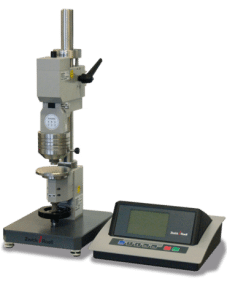ASTM D1415: Standard Test Method for Rubber Property – International Hardness
ASTM D1415 is an internationally recognized standard developed by ASTM International. This test method specifies procedures for measuring the hardness of rubber and elastomeric materials using the International Rubber Hardness Degrees (IRHD) scale. Unlike other hardness tests such as Shore A, the IRHD method provides more consistent results for softer and thinner rubber samples.
Hardness is a critical property in rubber materials, directly influencing their performance in various applications. ASTM D1415 helps manufacturers and researchers ensure that rubber components meet specific hardness requirements for durability, flexibility, and load-bearing capacity.
Purpose and Importance of ASTM D1415
The ASTM D1415 standard is designed to:
- Measure Hardness Precisely: IRHD offers accurate measurements, especially for softer materials where Shore hardness tests may not be reliable.
- Ensure Material Consistency: By defining specific hardness levels, ASTM D1415 helps maintain consistency across batches of rubber products.
- Support Product Design: Understanding the hardness of rubber materials enables engineers to design components that meet mechanical and operational demands.
Key Test Procedures in ASTM D1415
The ASTM D1415 test involves several steps to ensure precise hardness measurement. Here’s a detailed overview of the procedure:
1. Sample Preparation
Rubber specimens must be flat and have a thickness of at least 1 mm. The surface should be clean and free from defects that may affect measurement accuracy.

2. Equipment Setup
A calibrated IRHD hardness tester is used. The tester consists of a spherical indentor that applies a specified load to the rubber sample. The depth of the indentation determines the hardness.
3. Conditioning
Before testing, samples are conditioned at a specified temperature (usually 23°C) for a minimum of 16 hours to ensure uniformity.
4. Testing
- The indentor is pressed into the rubber surface under a small initial force to establish contact.
- A second, larger force is then applied, and the depth of penetration is measured.
- The result is displayed as an IRHD value, ranging from 0 (softest) to 100 (hardest).
- Multiple measurements are taken across different points of the sample, and the average value is reported.
Types of IRHD Hardness Scales
ASTM D1415 includes several scales for different rubber types and thicknesses:
- Normal IRHD: For standard rubber samples with a thickness of 1 mm or more.
- Micro IRHD: Used for thin samples and small rubber components.
- Hard IRHD: Designed for very hard rubber materials.
Applications of ASTM D1415
This standard is widely used in various industries where rubber hardness plays a critical role. Common applications include:
- Automotive Industry: Measuring the hardness of tires, seals, and gaskets.
- Aerospace: Evaluating elastomeric components in aircraft systems.
- Medical Devices: Ensuring consistency in rubber parts used in medical equipment.
- Consumer Goods: Testing the hardness of rubber soles, grips, and accessories.
- Industrial Equipment: Assessing the hardness of rubber components in machinery and hydraulic systems.
Benefits of Using ASTM D1415
- Precision: IRHD provides highly accurate and repeatable hardness measurements.
- Versatility: Suitable for a wide range of rubber materials, from soft to hard grades.
- Global Recognition: Since it’s an internationally accepted method, compliance with ASTM D1415 ensures global marketability of products.
- Improved Product Performance: Ensures that rubber components meet performance criteria for specific applications.
Challenges in ASTM D1415 Testing
While ASTM D1415 offers many advantages, it also comes with certain challenges:
- Specialized Equipment: IRHD testers are more complex and expensive than Shore durometers.
- Time-Consuming: The conditioning and multiple measurement process can take longer compared to other hardness tests.
- Sample Requirements: The method requires precise sample preparation to avoid errors in hardness measurement.








